
- Homepage
- Author
- Aleister Crowley (6)
- Arthur Von Mayer (15)
- Bram Stoker (8)
- Charles Dickens (9)
- Dan Brown (7)
- Dr. Seuss (18)
- Ernest Hemingway (9)
- Frank Herbert (9)
- George Orwell (12)
- Howe, George (6)
- J.k. Rowling (44)
- J.r.r. Tolkien (16)
- Kurban Said (6)
- L. Frank Baum (9)
- Margaret Mitchell (8)
- Mark Twain (8)
- Robert Paul Smith (6)
- Rudyard Kipling (16)
- Stephen King (28)
- Wendell Berry (9)
- Other (2636)
- Binding
- Brand
- Bandai (6)
- Bratz (16)
- Coomodel (5)
- Dc Collectibles (3)
- Disney (3)
- Fire Toys (2)
- Hasbro (6)
- Hot Toys (15)
- Kenner (5)
- Mattel (7)
- Mcfarlane Toys (3)
- Mezco (3)
- Neca (3)
- No Brand (21)
- Pokemon Game (2)
- Random House (4)
- Super Duck (3)
- Tiger Electronics (2)
- Vintage Bookworms (3)
- Wizards Of The Coast (13)
- Other (2760)
- Language
- Region
- Subject
- Americana (30)
- Art & Photography (98)
- Children's (115)
- Cooking (9)
- Exploration & Travel (29)
- History (151)
- Home & Garden (6)
- Illustrated (31)
- Law & Government (8)
- Literature (6)
- Literature & Fiction (504)
- Military & War (18)
- Outdoor & Nature (11)
- Performing Arts (7)
- Philosophy (20)
- Poetry (13)
- Reference (9)
- Science & Medicine (47)
- Self-help (10)
- Sports & Recreation (9)
- Other (1754)
1667 1ed Kircher on Magnetism Magnet Occult Science Physics Phenomena Magneticum
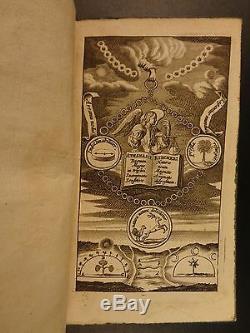



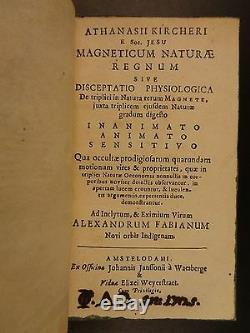
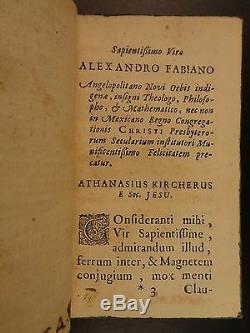

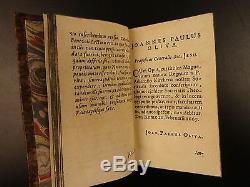
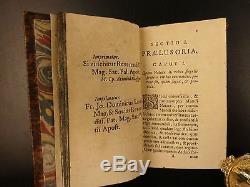
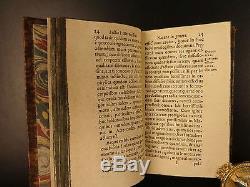

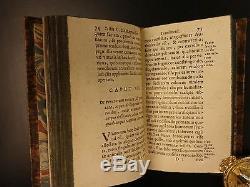


Kircher on Magnetism Magnet Occult Science Physics Phenomena Magneticum. Exceedingly rare & important book in history of Science. Athanasius Kircher, (1602 1680) was a 17th-century German Jesuit scholar and polymath who published around 40 major works, most notably in the fields of comparative religion, geology, and medicine.
Kircher has been compared to fellow Jesuit Roger Boscovich and to Leonardo da Vinci for his enormous range of interests, and has been honored with the title "Master of a Hundred Arts". Exceedingly rare & important book. Athanasii Kircheri Magneticum naturæ regnum, sive, Disceptatio physiologica de triplici in natura rerum magnete : juxta triplicem ejusdem naturæ gradum digesto inanimato, animato, sensitivo qua occultæ prodigiosarum quarundam motionum vires & proprietates, quæ in triplici naturæ oeconomia nonnullis in corporibus noviter detectis observantur, in apertam lucem eruuntur, & luculentis argumentis, experientia duce, demonstrantur. Amstelodami : Ex officina Johannis Janssonii a Waesberge, viduæ Elizei Weyerstraet, [1667]. This work contains Kirchers works on magnetism including the role of magnetism in man. Causes of friendship, emotions, and emotional reactions. Phenomena of physics in nature. Bibliography: Caillet 5781; Wellcome III, 395. Wear as seen in photos.Tight and secure leather binding. Complete with all 201 pages; plus, indexes, prefaces, and such. 5in X 3in (13cm x 8cm). (sometimes erroneously spelled Kirchner; Latin: Athanasius Kircherus, 16021680) was a 17th-century German Jesuit scholar and polymath who published around 40 major works, most notably in the fields of comparative religion, geology, and medicine. [2] He taught for more than forty years at the Roman College, where he set up a wunderkammer.
A resurgence of interest in Kircher has occurred within the scholarly community in recent decades. Kircher claimed to have deciphered the hieroglyphic writing of the ancient Egyptian language, but most of his assumptions and translations in this field were later found to be nonsensical.
He did, however, correctly establish the link between the ancient Egyptian and the modern Coptic languages, and some commentators regard him as the founder of Egyptology. Kircher was also fascinated with Sinology and wrote an encyclopedia of China, in which he noted the early presence there of Nestorian Christians while also attempting to establish links with Egypt and Christianity. Kircher's work in geology included studies of volcanoes and fossils.
One of the first people to observe microbes through a microscope, Kircher was ahead of his time in proposing that the plague was caused by an infectious microorganism and in suggesting effective measures to prevent the spread of the disease. Kircher also displayed a keen interest in technology and mechanical inventions; inventions attributed to him include a magnetic clock, various automatons and the first megaphone. The invention of the magic lantern is often misattributed to Kircher, [3] although he did conduct a study of the principles involved in his Ars Magna Lucis et Umbrae. A scientific star in his day, towards the end of his life he was eclipsed by the rationalism of René Descartes and others. In the late 20th century, however, the aesthetic qualities of his work again began to be appreciated. One modern scholar, Alan Cutler, described Kircher as "a giant among seventeenth-century scholars", and "one of the last thinkers who could rightfully claim all knowledge as his domain". [4] Another scholar, Edward W. Schmidt, referred to Kircher as "the last Renaissance man". In A Man of Misconceptions, his 2012 book about Kircher, John Glassie writes that while "many of Kircher's actual ideas today seem wildly off-base, if not simply bizarre, "[5] he was "a champion of wonder, a man of awe-inspiring erudition and inventiveness, " whose work was read by the smartest minds of the time. 2.1 Linguistic and cultural studies. 2.1.3 Biblical studies and exegesis.2.1.4 Other cultural work. 9.1 Works by Kircher. Kircher was born on 2 May in either 1601 or 1602 (he himself did not know) in Geisa, Buchonia, near Fulda, currently Hesse, Germany.
From his birthplace he took the epithets Bucho, Buchonius and Fuldensis which he sometimes added to his name. He attended the Jesuit College in Fulda from 1614 to 1618, when he entered the novitiate of the Society. The youngest of nine children, Kircher studied volcanoes owing to his passion for rocks and eruptions.He was taught Hebrew by a rabbi[7] in addition to his studies at school. He studied philosophy and theology at Paderborn, [3] but fled to Cologne in 1622 to escape advancing Protestant forces. [citation needed] On the journey, he narrowly escaped death after falling through the ice crossing the frozen Rhine one of several occasions on which his life was endangered.
Later, traveling to Heiligenstadt, he was caught and nearly hanged by a party of Protestant soldiers. From 1622 to 1624 Kircher was sent to begin his regency period in Koblenz as a teacher. This was followed by his assignment to Heiligenstadt, where he taught mathematics, Hebrew and Syriac, and produced a show of fireworks and moving scenery for the visiting Elector Archbishop of Mainz, showing early evidence of his interest in mechanical devices. He was ordained to the priesthood in 1628[3] and became professor of ethics and mathematics at the University of Würzburg, where he also taught Hebrew and Syriac.
Beginning in 1628, he also began to show an interest in Egyptian hieroglyphs. Kircher published his first book (the Ars Magnesia, reporting his research on magnetism) in 1631, but the same year he was driven by the continuing Thirty Years' War to the papal University of Avignon in France. In 1633, he was called to Vienna by the emperor to succeed Kepler as Mathematician to the Habsburg court. On the intervention of Nicolas-Claude Fabri de Peiresc, the order was rescinded and he was sent instead to Rome to continue with his scholarly work, but he had already embarked for Vienna.
He based himself in the city for the rest of his life, and from 1634, [8] he taught mathematics, physics and Oriental languages at the Collegio Romano (now the Pontifical Gregorian University) for several years before being released to devote himself to research. He studied malaria and the plague, amassing a collection of antiquities, which he exhibited along with devices of his own creation in the Museum Kircherianum. In 1661, Kircher discovered the ruins of a church said to have been constructed by Constantine on the site of Saint Eustace's vision of Jesus Christ in a stag's horns.
Kircher published a large number of substantial books on a very wide variety of subjects, such as Egyptology, geology, and music theory. His syncretic approach disregarded the boundaries between disciplines which are now conventional: his Magnes, for example, was ostensibly a discussion of magnetism, but also explored other forms of attraction such as gravity and love. Perhaps Kircher's best-known work today is his Oedipus Aegyptiacus (165254), a vast study of Egyptology and comparative religion. His books, written in Latin, were widely circulated in the 17th century, and they contributed to the dissemination of scientific information to a broader circle of readers.Kircher is not now considered to have made any significant original contributions, although a number of discoveries and inventions e. The magic lantern have sometimes been mistakenly attributed to him.
Linguistic and cultural studies[edit]. Further information: Egyptology, Egyptian hieroglyphics, and Egyptian language. The Coptic alphabet, from Prodromus coptus sive aegyptiacus. The last known example of Egyptian hieroglyphics dates from AD 394, after which all knowledge of hieroglyphics was lost. [10] Until Thomas Young and Jean-François Champollion found the key to hieroglyphics in the 19th century, the main authority was the 4th century Greek grammarian Horapollon, whose chief contribution was the misconception that hieroglyphics were "picture writing" and that future translators should look for symbolic meaning in the pictures. The first modern study of hieroglyphics came with Piero Valeriano Bolzani's Hieroglyphica (1556), [10] and Kircher was the most famous of the "decipherers" between ancient and modern times and the most famous Egyptologist of his day. [12] In his Lingua Aegyptiaca Restituta (1643), Kircher called hieroglyphics "this language hitherto unknown in Europe, in which there are as many pictures as letters, as many riddles as sounds, in short as many mazes to be escaped from as mountains to be climbed". [12] While some of his notions are long discredited, portions of his work have been valuable to later scholars, and Kircher helped pioneer Egyptology as a field of serious study. Kircher's interest in Egyptology began in 1628 when he became intrigued by a collection of hieroglyphs in the library at Speyer.He learned Coptic in 1633 and published the first grammar of that language in 1636, the Prodromus coptus sive aegyptiacus. Kircher then broke with Horapollon's interpretation of the language of the hieroglyphs with his Lingua aegyptiaca restituta. Kircher argued that Coptic preserved the last development of ancient Egyptian.
[12][13] For this Kircher has been considered the true "founder of Egyptology", because his work was conducted "before the discovery of the Rosetta Stone rendered Egyptian hieroglyphics comprehensible to scholars". [13] He also recognized the relationship between hieratic and hieroglyphic scripts. Frontispiece to Kircher's Oedipus Ægyptiacus; the Sphinx, confronted by Kircher's learning, admits he has solved her riddle. Between 1650 and 1654, Kircher published four volumes of "translations" of hieroglyphs in the context of his Coptic studies.
[12] However, according to Steven Frimmer, "none of them even remotely fitted the original texts". [12] In Oedipus Aegyptiacus, Kircher argued under the impression of the Hieroglyphica that ancient Egyptian was the language spoken by Adam and Eve, that Hermes Trismegistus was Moses, and that hieroglyphs were occult symbols which cannot be translated by words, but expressed only by marks, characters and figures. " This led him to translate simple hieroglyphic texts now known to read as dd Wsr ("Osiris says") as "The treachery of Typhon ends at the throne of Isis; the moisture of nature is guarded by the vigilance of Anubis[14].
According to the Egyptologist Sir E. Many writers pretended to have found the key to the hieroglyphics, and many more professed, with a shameless impudence which is hard to understand in these days, to translate the contents of the texts into a modern tongue. Foremost among such pretenders must be mentioned Athanasius Kircher, who, in the 17th century, declared that he had found the key to the hieroglyphic inscriptions; the translations which he prints in his Oedipus Aegyptiacus are utter nonsense, but as they were put forth in a learned tongue many people at the time believed they were correct. Although Kircher's approach to deciphering texts was based on a fundamental misconception, some modern commentators have described Kircher as the pioneer of the serious study of hieroglyphs. The data which he collected were later consulted by Champollion in his successful efforts to decode the script. Kircher himself recognized the possibility of the hieroglyphs constituting an alphabet; he included in his proposed system (incorrect) derivations of the Greek alphabet from 21 hieroglyphs. [citation needed] According to Joseph MacDonnell, it was "because of Kircher's work that scientists knew what to look for when interpreting the Rosetta stone". [16] Another scholar of ancient Egypt, Erik Iversen, concluded. It is therefore Kircher's incontestable merit that he was the first to have discovered the phonetic value of an Egyptian hieroglyph. From a humanistic as well as an intellectual point of view Egyptology may very well be proud of having Kircher as its founder. Kircher was also actively involved in the erection of obelisks in Roman squares, often adding fantastic "hieroglyphs" of his own design in the blank areas that are now puzzling to modern scholars. Map of China, China Illustrata. See also: Jesuit China missions. Kircher had an early interest in China, telling his superior in 1629 that he wished to become a missionary to that country. In 1667 he published a treatise whose full title was China monumentis, qua sacris qua profanis, nec non variis naturae & artis spectaculis, aliarumque rerum memorabilium argumentis illustrata, and which is commonly known simply as China Illustrata, i.It was a work of encyclopedic breadth, combining material of unequal quality, from accurate cartography to mythical elements, such as a study of dragons. The work drew heavily on the reports of Jesuits working in China, in particular Michael Boym[18] and Martino Martini. China Illustrata emphasized the Christian elements of Chinese history, both real and imagined: the book noted the early presence of Nestorian Christians (with a Latin translation of the Nestorian Stele of Xi'an provided by Boym and his Chinese collaborator, Andrew Zheng), [19] but also claimed that the Chinese were descended from the sons of Ham, that Confucius was Hermes Trismegistus/Moses and that the Chinese characters were abstracted hieroglyphs. In Kircher's system, ideograms were inferior to hieroglyphs because they referred to specific ideas rather than to mysterious complexes of ideas, while the signs of the Maya and Aztecs were yet lower pictograms which referred only to objects.
Umberto Eco comments that this idea reflected and supported the ethnocentric European attitude toward Chinese and native American civilizations. "China was presented not as an unknown barbarian to be defeated but as a prodigal son who should return to the home of the common father". Biblical studies and exegesis[edit]. In 1675, he published Arca Noë, the results of his research on the biblical Ark of Noah following the Counter-Reformation, allegorical interpretation was giving way to the study of the Old Testament as literal truth among Scriptural scholars. Kircher analyzed the dimensions of the Ark; based on the number of species known to him (excluding insects and other forms thought to arise spontaneously), he calculated that overcrowding would not have been a problem.He also discussed the logistics of the Ark voyage, speculating on whether extra livestock was brought to feed carnivores and what the daily schedule of feeding and caring for animals must have been. Kircher was sent the Voynich Manuscript in 1666 by Johannes Marcus Marci in the hope of Kircher being able to decipher it. [20] The manuscript remained in the Collegio Romano until Victor Emmanuel II of Italy annexed the Papal States in 1870, though scepticism as to the authenticity of the story and of the origin of the manuscript itself exists. In his Polygraphia nova (1663), Kircher proposed an artificial universal language. Kircher's model of the Earth's internal fires, from Mundus Subterraneus.
On a visit to southern Italy in 1638, the ever-curious Kircher was lowered into the crater of Vesuvius, then on the brink of eruption, in order to examine its interior. He was also intrigued by the subterranean rumbling which he heard at the Strait of Messina. His geological and geographical investigations culminated in his Mundus Subterraneus of 1664, in which he suggested that the tides were caused by water moving to and from a subterranean ocean. Kircher was also puzzled by fossils.He understood that fossils were the remains of animals. He ascribed large bones to giant races of humans. [21] Not all the objects which he was attempting to explain were in fact fossils, hence the diversity of explanations.
He interpreted mountain ranges as the Earth's skeletal structures exposed by weathering. Kircher's map of Atlantis, oriented with south at the top, from Mundus Subterraneus.
Mundus Subterraneus includes several pages about the legendary island of Atlantis including a map with the Latin caption Situs Insulae Atlantidis, a Mari olim absorpte ex mente Egyptiorum et Platonis descriptio. " translating as "Site of the island of Atlantis, in the sea, from Egyptian sources and Plato's description.
The item "1667 1ed Kircher on Magnetism Magnet Occult Science Physics Phenomena Magneticum" is in sale since Tuesday, May 23, 2017. This item is in the category "Books\Antiquarian & Collectible".
The seller is "schilb_antiquarian_books" and is located in Columbia, Missouri. This item can be shipped worldwide.- Binding: Leather
- Special Attributes: 1st Edition
- Language: Latin
- Original/Facsimile: Original
- Original/Reproduction: Original
- Year Printed: 1667
- Subject: Science & Medicine
- Topic: Occult

